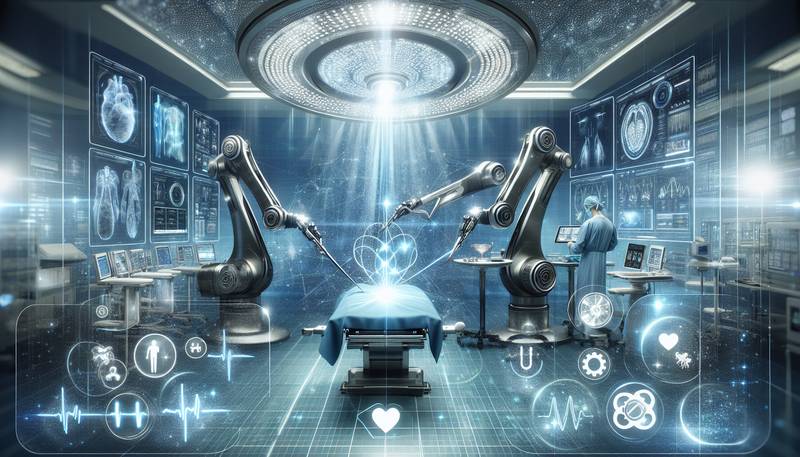Tech in Medicine: From Telehealth to Robotic Surgery

The healthcare industry has always been at the forefront of technological advancements. From the invention of the stethoscope in the 19th century to the development of cutting-edge medical devices in the 21st century, technology has played a crucial role in shaping the way we diagnose, treat, and manage health conditions. In recent years, the integration of technology in medicine has been accelerated by the rise of telehealth, robotic surgery, and other digital innovations. In this article, we will explore how these technological advancements are transforming the healthcare industry and improving patient outcomes.
Telehealth: Bridging the Gap in Healthcare Accessibility
Telehealth, also known as telemedicine, has been a game-changer in the healthcare industry. It allows patients to access medical care remotely, through video conferencing, phone calls, or messaging platforms. This has been particularly beneficial for individuals living in rural or remote areas, where access to medical facilities is limited. Telehealth has also proven to be a valuable tool during the COVID-19 pandemic, as it has helped to reduce the risk of infection by minimizing physical contact between patients and healthcare providers.
Telehealth services can range from virtual consultations with a physician to remote monitoring of chronic conditions. For example, patients with diabetes can use telehealth platforms to regularly share their blood sugar levels with their doctor, who can then adjust their treatment plan accordingly. Telehealth can also be used for mental health services, allowing patients to receive therapy and counseling from the comfort of their own home.
Robotic Surgery: Enhancing Precision and Reducing Recovery Time
Robotic surgery is another exciting development in the field of medicine. This technology allows surgeons to perform complex procedures with increased precision and control. Robotic surgery systems, such as the da Vinci Surgical System, consist of a console where the surgeon sits and controls the robotic arms that hold the surgical instruments. The robotic arms can move in ways that the human hand cannot, allowing for greater accuracy and smaller incisions.
One of the biggest benefits of robotic surgery is the reduced recovery time for patients. Because the incisions are smaller, there is less pain and scarring, and patients can return to their normal activities more quickly. Robotic surgery has been used for a variety of procedures, including heart surgery, gynecological surgery, and prostate surgery.
Wearable Technology: Monitoring Health on the Go
Wearable technology, such as fitness trackers and smartwatches, has become increasingly popular in recent years. These devices can track a wide range of health metrics, including heart rate, sleep patterns, and activity levels. Wearable technology can also be used to monitor specific health conditions, such as atrial fibrillation or sleep apnea.
One of the biggest advantages of wearable technology is the ability to collect continuous data on a patient's health. This data can then be shared with their healthcare provider, who can use it to make informed decisions about their treatment plan. Wearable technology can also help patients take a more active role in managing their own health, by providing them with real-time feedback on their progress.
Artificial Intelligence: Revolutionizing Diagnosis and Treatment
Artificial intelligence (AI) is another area where technology is transforming the healthcare industry. AI algorithms can analyze large amounts of data to identify patterns and make predictions. This can be used to assist with diagnosis, by analyzing medical images or electronic health records to identify potential health issues.
AI can also be used to personalize treatment plans for patients. For example, an AI algorithm could analyze a patient's genetic makeup, lifestyle, and medical history to recommend the most effective medication or treatment plan. AI is also being used to develop new drugs and therapies, by analyzing data on existing medications and their effectiveness.
Conclusion
The integration of technology in medicine is an exciting development that has the potential to revolutionize the way we approach healthcare. From telehealth to robotic surgery, these advancements are making healthcare more accessible, efficient, and personalized. As technology continues to evolve, we can expect to see even more innovative solutions that will improve patient outcomes and transform the healthcare industry as we know it.


